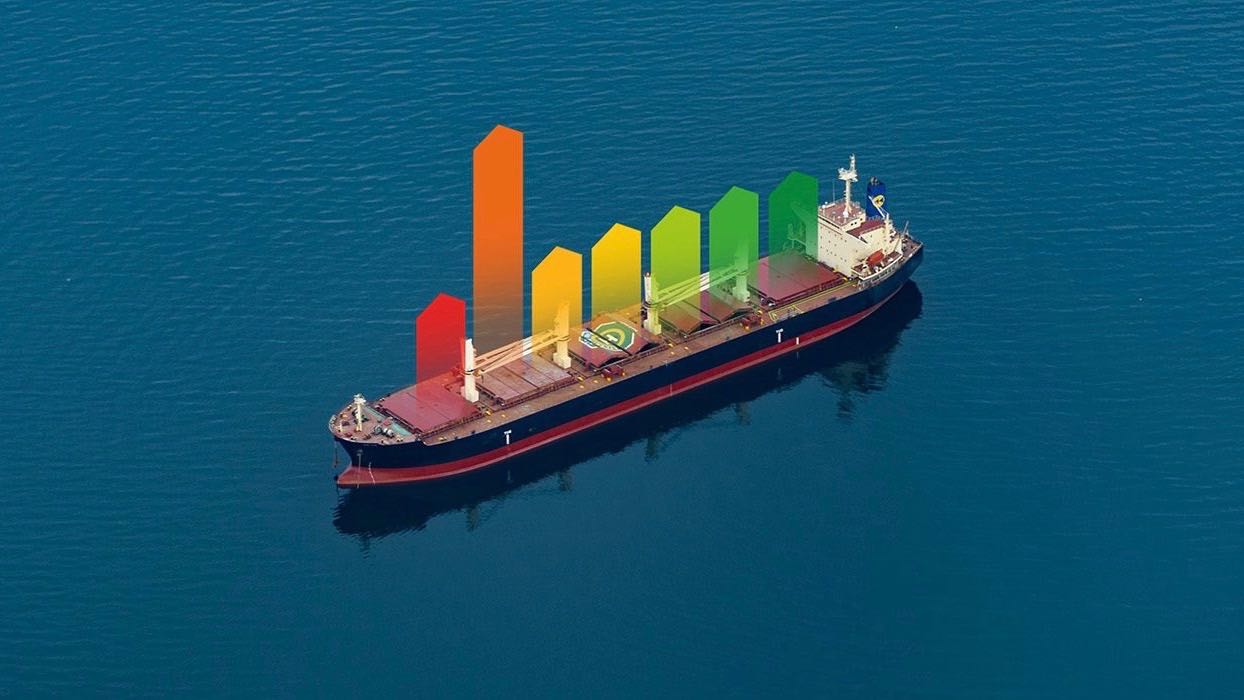28 November 2024
What is the new GHG Rating for ships by RightShip?

RightShip’s Greenhouse Gas (GHG) Rating was first launched almost a decade ago. Hence, enabling charterers to select vessels offering lower CO2 emissions. Their rating system has recently undergone changes. So RightShip explained how it works and what owners and operators can do to improve their rating.
Concept
When RightShip’s GHG rating was established in 2012 as a tool to compare CO2 emissions of vessels on a global basis, the subject of decarbonization was far over the horizon. But in the last decade, it has become a top priority for the shipping industry; with the IMO adopting new mandatory measures to cut the carbon intensity.
Many shipowners, operators, and charterers are already familiar with RightShip and vetting in general. Indeed, it is not unusual to find a clause within a charter party providing that the Owner guarantees a minimum RightShip GHG rating for the vessel, normally at the time of fixing or delivery. Therefore, the assessment of a vessel’s environmental performance is becoming more commonplace.
How does the GHG rating work?
The rating compares a ship’s theoretical CO2 emissions relative to peer vessels of a similar size and type. Rightship uses an easy-to-interpret ‘A to G’ scale with ‘A’ being the most attractive to charterers. Note that, this scale is different to the CII rating which is a measure of operational performance.
How can shipowners improve their RightShip GHG Rating?
The installation of energy-saving devices or equipment will improve their rating and therefore their appeal to charterers. Shipowners and operators have caught onto this. Thus, in the past year alone they have submitted proof of more than one thousand modifications.

Aside from modifications, what else can vary the RightShip GHG Rating?
The rating is dynamic! Similar types and deadweight vessels form peer groups. Consequently, if a vessel with a better GHG rating, falls into the group, it will impact the average. Therefore, shipowners will need to constantly improve efficiency to achieve the benchmark set in the peer group and avoid a poor rating.
How will power limitation to meet the Energy Efficiency Existing Ship Index (EEXI) requirements impact the RightShip GHG rating?
Owners who achieve an improvement in operational efficiency receive a better rating and will attract more charterers.
There are similarities in the calculation method of the RightShip GHG Rating and EEXI. However, EEXI data is not used for the GHG rating.
Many shipowners may opt for engine power limitation (EPL) or shaft power limitation (SHaPoli) for EEXI. But, these will not show the same improvements in their rating compared with other propulsion improvements such as ESD. Moreover, power limitation will negatively impact the CII rating of the vessel since it will be forced to sail at a lower speed. Hence, recording fewer nautical miles in a calendar year, which translates into poor transport work.
Source: North P&I
See Also
This year’s Posidonia Exhibition event recently took place, bringing together the shipping industry professionals from across the globe after 4 years of waiting. MAST Maritime Services, organized and offered the opportunity to attend the seminar: Get in line with the industry’s decarbonization plan. Hence, along with Lloyd’s Register, Rightship and CMES-Tech they enlightened the paths to a more sustainable future according to the new measures (EEXI, CII).


